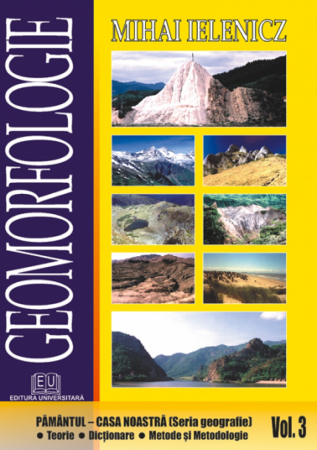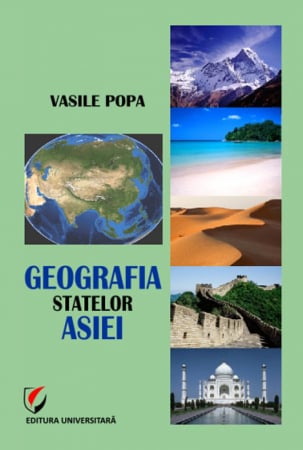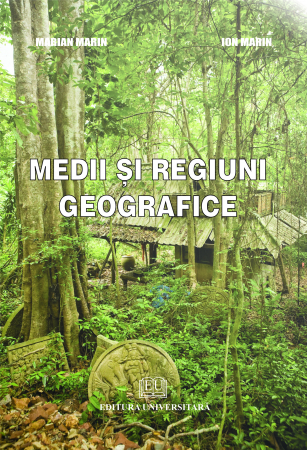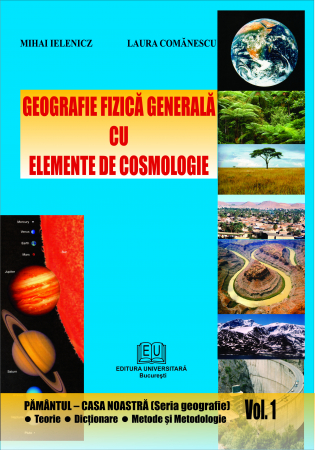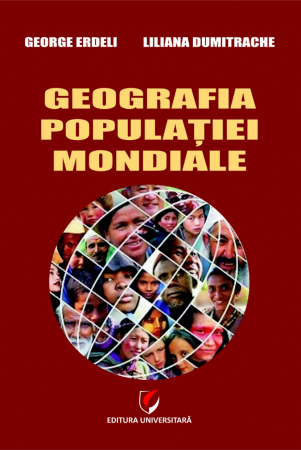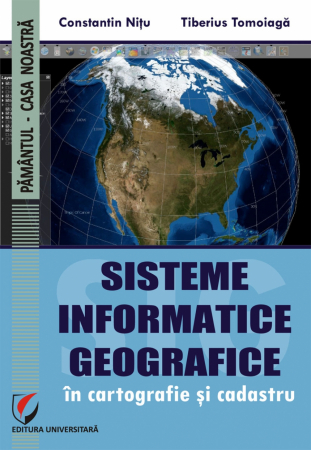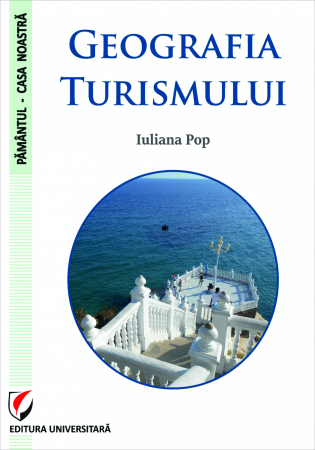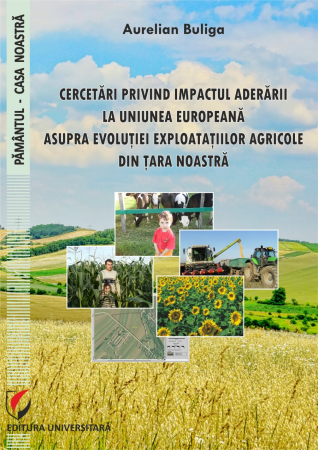ISBN: 978-973-749-131-2
Publisher year: 2011
Edition: II
Pages: 168
Publisher: Editura Universitara
Author: Sterie Ciulache, Nicoleta Ionac
- Description
- Download (1)
- Authors
- Content
- More details
- Where to find it
- Reviews (0)
This volume is addressed to first year students, Open Distance Learning and Low Frequency Education, who, animated by the natural desire to broaden their horizons of knowledge, as well as the equally natural one, to increase the chances in the current competition for employment in the field of geography, they decided to use the opportunity offered by this modern form of education, through which they will be able to obtain the real and legal qualification to participate in the respective competition. It is one of the numerous textbooks that provide the basic bibliography for the training of students in each of the disciplines included in the study program developed by experienced geographers belonging to the University of Bucharest. Its substance consists of the essential problems of the two fundamental disciplines that give it its title: Essential in Meteorology and Climatology.
-
Essential in Meteorology and Climatology
Download
NICOLETA IONAC
1. ATMOSPHERE AND PROCESS ENERGY IN IT / 9
1.1. ATMOSPHERE / 10
1.1.1. The origin of the atmosphere / 11
1.1.2. Atmospheric limits / 11
1.1.3. Atmosphere shape / 13
1.1.4. Atmospheric mass / 14
1.1.5. Atmosphere composition / 14
1.1.6. Atmosphere structure / 21
Self-assessment test no. 1/26
1.2. ATMOSPHERIC PROCESS ENERGY / 27
1.2.1. Energy sources / 27
1.2.2. Radiant energy flows through the atmosphere / 30
1.2.3. Processes in which heat is consumed resulting from the radiative balance / 43
Self-assessment test no. 2/57
Answers and comments to the questions from the self-assessment test no. 1/58
Answers and comments to the questions from the self-assessment test no. 2/59
Control work / 60
Minimum bibliography / 61
2. WATER AND MOVEMENT IN THE ATMOSPHERE / 63
2.1. WATER IN THE ATMOSPHERE / 64
2.1.1. Evaporation / 64
2.1.2. Air humidity / 65
2.1.3. Condensation / 68
Self-assessment test no. 3/79
2.2. MOVEMENT IN THE ATMOSPHERE / 80
2.2.1. Atmospheric pressure / 80
2.2.2. The wind / 84
Self-assessment test no. 4/87
Answers and comments to the questions from the self-assessment test no. 3/87
Answers and comments to the questions from the self-assessment test no. 4/89
Control work / 90
Minimum bibliography / 90
3. THE BASIC PROBLEMS OF SYNOPTIC METEOROLOGY / 92
3.1. AIR MASSES / 93
3.1.1. Formation of air masses / 94
3.1.2. Classification of air masses / 95
Self-assessment test no. 5/98
ATMOSPHERIC FRONTS / 99
3.2.1. Frontogenesis and frontolysis / 99
3.2.2. Classification of atmospheric fronts // 100
Self-assessment test no. 6/107
3.3. CYCLONES OR BARICE DEPRESSIONS / 107
3.3.1. Cyclone formation / 108
3.3.2. The structure of the mobile cyclone and the weather / 111
3.3.3. Cyclone classification / 113
3.3.4. Tropical cyclones / 113
Self-assessment test no. 7/116
3.4. ANTICYCLONES OR BARICE MAXIMUMS 116
3.4.1. Formation of anticyclones 117
3.4.2. Mobile anticyclone structure and weather / 117
3.4.3. Classification of anticyclones / 118
Self-assessment test no. 8/118
3.5. WEATHER FORECAST / 119
Self-assessment test no. 9/120
Answers and comments to the questions from the self-assessment test no. 5/120
Answers and comments to the questions from the self-assessment test no. 6/121
Answers and comments to the questions from the self-assessment test no. 7/122
Answers and comments to the questions from the self-assessment test no. 8/123
Answers and comments to the questions from the self-assessment test no. 9/123
Control work / 124
Minimum bibliography / 125
4. THE BASIC ISSUES OF CLIMATOLOGY / 126
4.1. CLIMATE GENETIC FACTORS / 127
4.1.1. Radiative climatogenic factors / 127
4.1.2. Physico-geographical climatogenic factors / 129
4.1.3. Dynamic climatogenic factors / 136
4.1.4. Anthropogenic climatogenic factors / 151
Self-assessment test no. 10/152
4.2. DISTRIBUTION OF MAIN CLIMATE CHARACTERISTICS / 152
4.2.1. Distribution of average annual air temperature / 153
4.2.2. Distribution of average annual rainfall / 156
Self-assessment test no. 11/161
4.3. CLIMATE CLASSIFICATION / 162
Self-assessment test no. 12/163
Answers and comments to the questions from the self-assessment test no. 10/163
Answers and comments to the questions from the self-assessment test no. 11/165
Answers and comments to the questions from the self-assessment test no. 12/165
Control work / 166
Bibliography / 167
According to the strategy developed for distance learning and part-time education, which could not omit the difficulties encountered by students in finding the time resource and procuring the learning resources necessary for adequate training, this manual, like all textbooks in the series part, provides students with the essential knowledge for an accurate understanding of how atmospheric systems work in the complex whole of the terrestrial system.
The effort of essentialization, consisting in selecting the basic problems and explaining the mechanisms of the processes and atmospheric and hydrosphere phenomena decisive for the functioning of the respective system, is doubled by the one destined to accessibility of often arid and unattractive knowledge for a good part of the students. The latter effort refers to the attempt to ensure the maximum clarity of the language used in defining notions, legalities, etc., in highlighting causal links, in ranking the factors that generate various processes and determine their evolution, in identifying their consequences for other processes and areas, etc. .
Accessibility and efficiency are also pursued by the form adopted by this manual and all other manuals in the series. And the form wants to be relaxed in the essentialization and systematization of the material, trying to stimulate and facilitate learning by establishing the objectives of each chapter, by formulating questions and answers with different degrees of difficulty, by emphasizing some essential processes and phenomena, some legalities, some superlatives etc.
The option for such a scientific level of presentation of the Meteorology and Climatology textbook is based on the relationship between accessibility and efficiency in the real context of its addressability. Because a higher level could determine, for those to whom it is addressed, a decrease in accessibility, and a lower level would entail a decrease in efficiency.
If the authors' thoughts were well balanced and correctly transposed in the textbook, it remains to be seen. Those who will be the first to know this are, of course, the users.
The Authors
Customer Support Monday - Friday, between 8.00 - 16.00
0745 200 718 0745 200 357 comenzi@editurauniversitara.ro
6359.png)
![Essential in Meteorology and Climatology [1] Essential in Meteorology and Climatology [1]](https://gomagcdn.ro/domains/editurauniversitara.ro/files/product/large/esential-in-meteorologie-si-climatologie-2133-83429.jpg)


